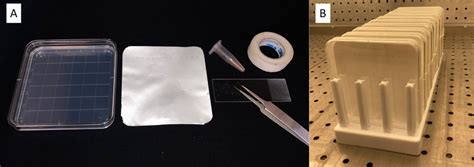Agar Plate Storage: The Ultimate Guide
Maintaining the viability and sterility of agar plates is crucial for successful microbiological work. Improper storage can lead to contamination, bacterial overgrowth, and ultimately, inaccurate or unusable results. This comprehensive guide explores the best practices for agar plate storage, addressing common concerns and offering practical solutions for both short-term and long-term preservation.
How Long Can Agar Plates Be Stored?
The shelf life of an agar plate depends heavily on several factors: the type of agar used, the storage conditions, and the intended application. Generally, prepared agar plates can be stored for several weeks to a few months under optimal conditions. However, it's crucial to note that the longer the storage time, the higher the risk of contamination and a decrease in the quality of the agar.
Factors Affecting Agar Plate Shelf Life:
- Type of Agar: Some agar formulations are inherently more stable than others. For example, nutrient agar might have a shorter shelf life compared to specific selective or differential agars.
- Storage Temperature: Lower temperatures significantly prolong the shelf life.
- Storage Container: Proper sealing is essential to prevent contamination and dehydration.
- Initial Sterility: Plates that were improperly sterilized before storage will have a much shorter lifespan.
Optimal Storage Conditions for Agar Plates:
The ideal storage conditions minimize the risk of contamination and dehydration while maintaining the agar's integrity.
-
Temperature: The most effective temperature for short-term storage is 4°C (refrigeration). This slows down bacterial growth and reduces the rate of evaporation. Freezing (-20°C or -80°C) can also be used for longer-term storage, but may affect the agar's quality upon thawing.
-
Container: Storing plates in sealed containers helps maintain humidity and prevents contamination. If not using a designated plate storage container, tightly sealing the plates in plastic bags or wrapping them with parafilm is acceptable for short-term storage.
-
Orientation: Store plates upside down (agar side up). This prevents condensation from dripping onto the agar surface, which could lead to contamination.
-
Location: Choose a cool, dark place away from direct sunlight or heat sources to maintain stable conditions.
How to Store Agar Plates for Different Timeframes:
Short-Term Storage (1-4 Weeks):
- Store plates upside down in sealed containers at 4°C.
- Regularly inspect plates for signs of contamination (e.g., cloudiness, unusual growth).
Long-Term Storage (Several Months):
- Freezing is the preferred method for long-term storage. Plates should be properly wrapped to prevent desiccation.
- Consider using specialized cryogenic storage systems for optimal protection. Note that thawing can damage the agar.
What Happens if Agar Plates are Stored Incorrectly?
Improper storage can lead to several problems, including:
- Contamination: The most common issue. Bacteria, fungi, or other microorganisms can contaminate the agar, rendering it useless for experiments.
- Dehydration: The agar can dry out, becoming cracked and unusable.
- Agar Degradation: Extended storage can cause the agar to break down chemically, altering its properties and making it unsuitable for its intended purpose.
Signs of Spoiled Agar Plates:
- Visible contamination: Obvious bacterial, fungal, or other microbial growth on the agar surface.
- Cloudiness: The agar may appear cloudy or hazy, indicating microbial growth.
- Changes in color or texture: Discoloration or unusual texture changes can be signs of degradation or contamination.
- Drying or cracking: Dehydration results in the agar drying out and developing cracks.
How to Identify and Handle Agar Plate Contamination:
Early detection is key to minimizing the spread of contamination. If contamination is suspected, immediately isolate the affected plates. Dispose of contaminated plates according to your laboratory's safety protocols. Thoroughly disinfect the storage area and follow strict aseptic techniques for future preparation and handling.
Can You Reuse Agar Plates?
Generally, it's not recommended to reuse agar plates. Once a plate has been inoculated or has been exposed to the environment for any length of time, even in refrigeration, there’s a substantial risk of contamination that would compromise any further experiments. The cost of new plates is minimal compared to the time and effort lost due to flawed results.
By following these guidelines, you can significantly extend the shelf life of your agar plates and ensure the reliability of your microbiological experiments. Remember, proper storage is a critical component of successful laboratory work.

